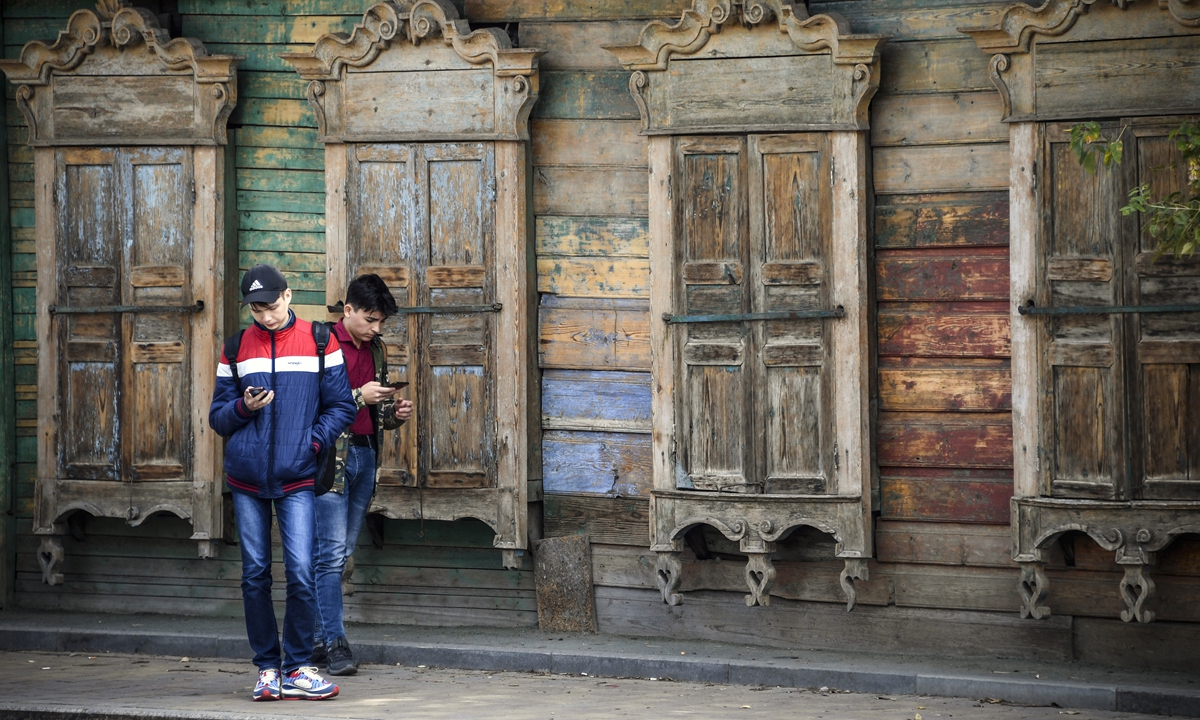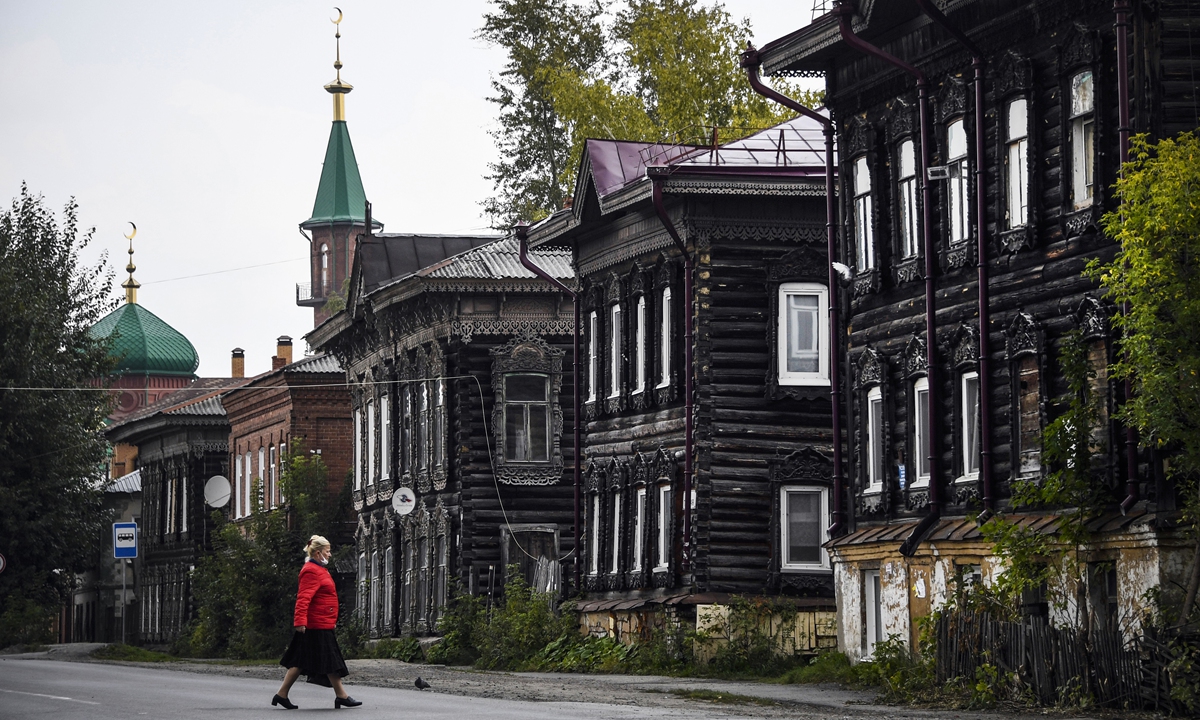Siberia’s treasured wooden houses face demolition
Source: AFP Published: 2020/10/14 17:43:40

People stand in front of a traditional wooden house in the Siberian city of Tomsk on September 8. Photo: AFP

A woman crosses a street in Tatar neighborhood, a traditional wooden housing district in the Siberian city of Tomsk, on September 8. Photo: AFP
The ornate wooden homes dotting the Siberian city of Tomsk are cherished regional landmarks, but that hasn't prevented many from falling into disrepair following years of neglect, with some now facing demolition.A scattering of the iconic buildings still boast brightly colored and cared-for exteriors with intricate wood carvings adorning window frames and roofs.
A large number, however, look as if they have been abandoned.
The aging townhouses represent some of the finest examples of wooden architecture in the country.
Yet historians in the city say their future is uncertain, with government support too slow to respond to the urgent need to save them and commercial interests spying prime real estate.
Many of the homes have only survived this long because residents "were forced to live in what already existed," historian Sergei Maltsev, 46, tells AFP.
There are around 2,000 of the historic houses in the city of 575,000 people, Maltsev says, pointing out that fewer than 100 are preserved by the state as heritage sites.
Some fall prey to real-estate developers and can be leveled on orders from the mayor.
Some 2,900 kilometers east of Moscow, Tomsk is one of the oldest cities in Siberia, founded in 1604 on the banks of the river Tom.
At the beginning of the 20th century, it was a major transport hub through which merchants would pass on their way to Asia.
Long-time program
Traders, craftsmen and blacksmiths built hundreds of the houses made of wood - affordable building material during the time period - to demonstrate their success.
But the age of prosperity was short-lived.
In the 1910s, Tomsk was stripped of its status as the regional capital in favor of a village called Novonikolaeyvsk, located some 265 kilometers to its southwest, which was to become a stop on the Trans-Siberian railway.
That settlement would later be renamed Novosibirsk, now the third largest city in Russia and a large industrial center dominated by imposing Soviet-style buildings made of concrete blocks.
In 2016, a project was launched aimed at establishing a historic preservation zone in Tomsk within which the wooden houses could not be destroyed.
But the initiative has been slow to get off the ground.
Maltsev puts this down to "lobbying by construction companies" or the "usual bureaucratic delays."
Another conservation program sees the aging properties rented out at a symbolic price on the condition that they will be restored by their new inhabitants.
But it is yet to have any significant impact.
Maltsev says the program "works" but notes it has saved fewer than 10 houses since it launched three years ago.
"It takes a long time and there are few investors given the current economic situation," he tells AFP.
Newspaper headline: Uncertain future
Posted in: ART,CULTURE & LEISURE,ARTS FOCUS